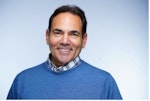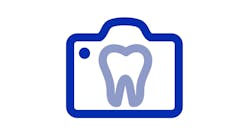It’s an age-old mystery: how do we attract the best team? I do not claim to have the definitive answer; my guess is that business owners have been debating this subject forever. An article published in the Harvard Business Review speaks of different ways to show appreciation and value to your team.1 Do we show interest in our teammates? Do we show compassion? Do we take time to teach in the moment? Expressing this to another human does not always come easily. I, for one, learned this the hard way.
Lessons from Burger King
In my days before dentistry, I was a manager and rebuilding specialist for Burger King. Yes, the home of the Whopper. In those days I would have teams of 20 to 70 people working for me. Actually, they weren’t working for me; they were working under me. My responsibility was to lift them up, teach them, and train them. Sometimes one assistant manager (or three, depending on the size of the restaurant) would train me. The crew, as we referred to them, were a mix of ages, ethnicities, and backgrounds. This was 34 years ago. Restaurant locations were in Rogers Park, Brickyard Mall, Skokie, Park Ridge, Bannockburn; I worked from the north side of Chicago to the North Shore. I had the opportunity to work with many great people. The common theme among the successful restaurant teams was respect one another and get the job done! No excuses.
Lessons from my dental practice
I have been practicing for 29 years, but 20 years ago I learned the hard way. One day, my head dental assistant, Angel, pulled me aside. She was angry at me, and she told me that I needed to calm down and stop yelling/barking out. “The team doesn’t like it, and the patients are put on edge.” She also told me that I probably didn’t realize how I sounded. I was shocked. I thought, I don’t sound that way!
But she was telling me this because she cared about me as a person. As hard as it was to hear, she was right. I asked myself, where is the guy who rocked the fast-food team? I had become a specialist in turning failing restaurants around, sometimes even rebuilding entire teams. I wondered where the man went who was compassionate and a problem solver. I needed to find him again, and thankfully I did.
I learned how to become a better facilitator, listener, cheerleader, discipliner, confidant, financer, and friend.
I was nine years out of dental school honing my skills and education, and a father with young children. It was not a new story for a dental practice owner, but it was new to me. I found myself stressed. I was paying off bills, working my rear end off and not knowing there is a better way. I was so transfixed on my professional skills that I didn’t work on my relationships with my dental team. Personal issues at home also suffered.
I learned from all this that I had to improve who I was and what I stood for. These are the questions I asked along this path:
- How do I treat others?
- What is my tone?
- What is my true moral compass?
I researched who the leading self-help experts were at the time. One author was Dr. Wayne W. Dyer, who, in The Power of Intention, said: “If you fail to respect yourself, you’re showing contempt for the process of Creation.”2 It’s a book I still look to for advice, think about, and contemplate. I knew I must act in a way that is intentional and not random.
When I changed my career trajectory, I acted with intention. All the times in my life that I let randomness rule my day to day, the results that followed were mediocre. Living a conscious intentional path has allowed me to create a life that I am able to lead. The learnings from these self-help books helped me become a better leader and make an impact on my team members.
Building a cohesive team
Becoming cognizant of how I treated my team allowed for a cohesive team to be built. Three of the team had been with the practice for longer than 20 years, one for almost 40 years, and three for more than 10 years. I found that the more interested I was in them as humans, the more they responded. When I took the time to educate them one-on-one and as a team, the more they grew. When I included them in CE or trips away to the Smile Source Exchange, they would bring ideas to me, and we would perform better as a group.
Some of the best answers to internal office issues can be found among core team members. Ask them questions and listen to the responses they share. When I allowed myself to be open to their answers, it allowed for the creation of an egalitarian environment.
When we get a potential new employee to come in, we always do two working interviews. The reason is to gauge clinical skills, but more importantly, I want feedback from my team on the person. Do they align with our core values? The more a potential team member aligns with your vision and philosophy, the better the outcome. We cannot lead by chance or hope. We must lead purposefully and intentionally. What starts to happen even organically is that future team members hear about the practice. They will hear two things: one, that it’s a great place to work, and two, you treat your team well.
Over the course of my career, I have had others come in and help us build systems. One of the most important systems is who answers the phone first and second? My team knows the phone must be answered before the third ring. How is that call answered? What is the verbiage and tone? Is the tone welcoming? Do you monitor your phones? Do you have a new-patient book that offers prompts? What data are you collecting on the call?
My business manager, Wendy, embraced this training, so much so that when we do training and retraining, she oversees it. All of us participate as a team. We have five phone lines coming into the practice. If the administrative team is tied up on other calls, then the clinical team can pick up the call and begin to gather the information. I have been known to answer the phone as well. I am not as proficient as Wendy or the administrative team, though; the reason has to do with repetitions.
Systems come from intentional planning; coaches and consultants can help us build those systems. Team members appreciate the training; it gives them direction. Mentors who have traveled this dental business road for a decade or more are an incredible resource for young dentists as well as those who are more seasoned.
Our team members and future team members seek out an environment that is stable—one that offers education, growth, and a dental home where they can feel valued. Every day is an opportunity to learn and grow together.
Editor's note: This article appeared in the April 2025 print edition of Dental Economics magazine. Dentists in North America are eligible for a complimentary print subscription. Sign up here.
References
- Lee K. Simple ways to make your team feel valued. Harvard Business Review. July 19, 2022. https://hbr.org/2022/07/simple-ways-to-make-your-team-feel-valued
- Dyer WW. The Power of Intention. Hay House LLC; 2005.








